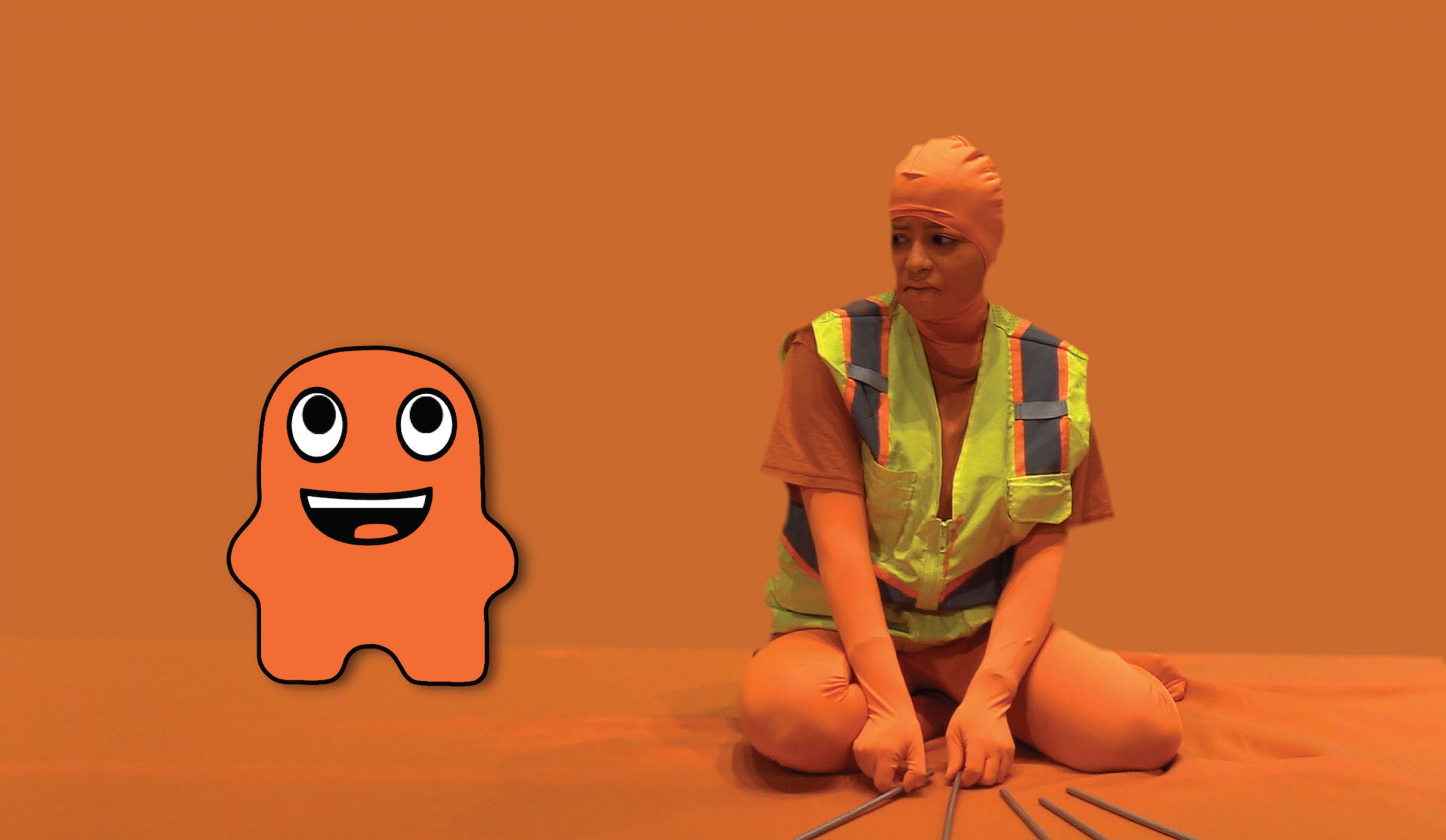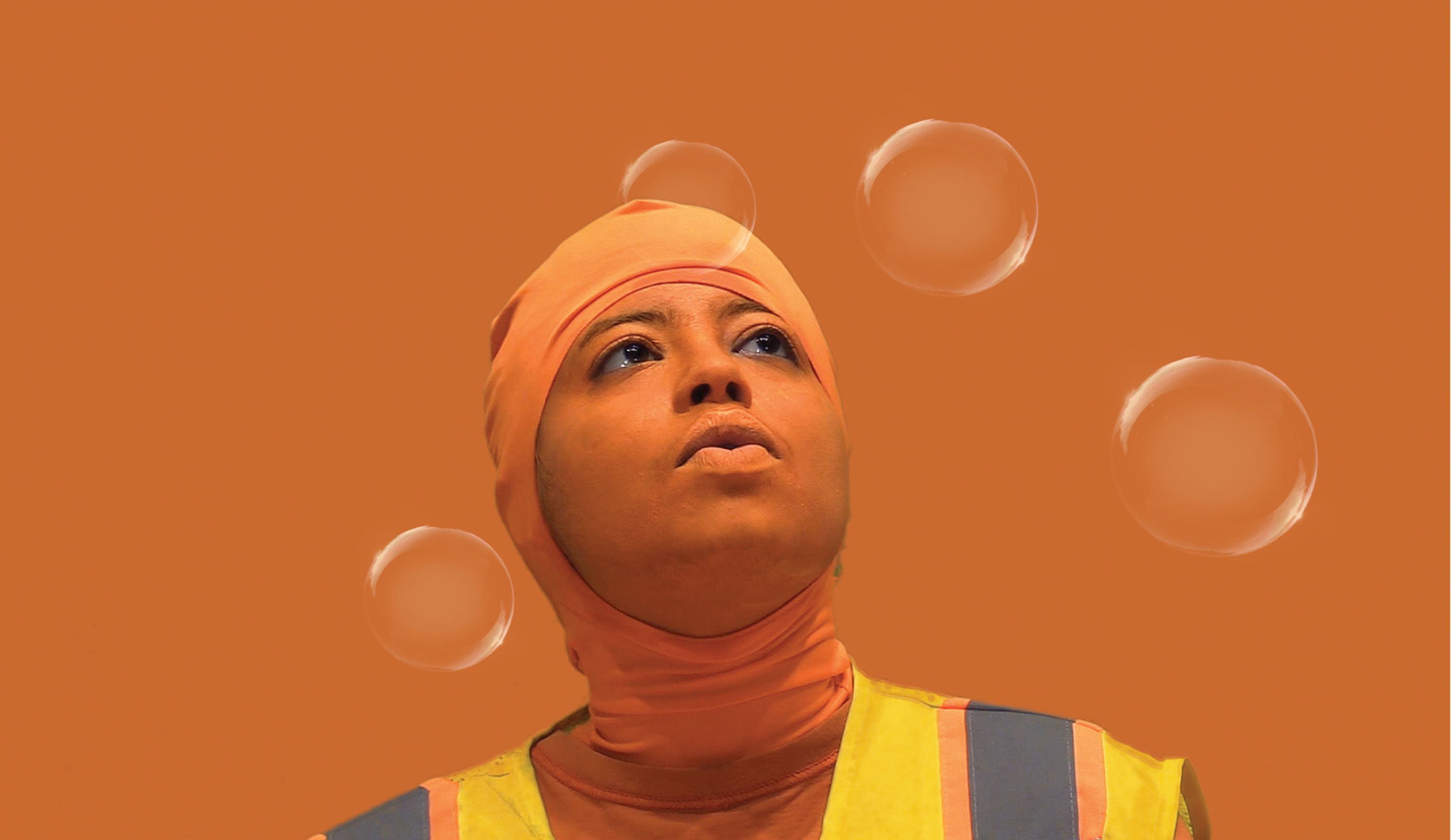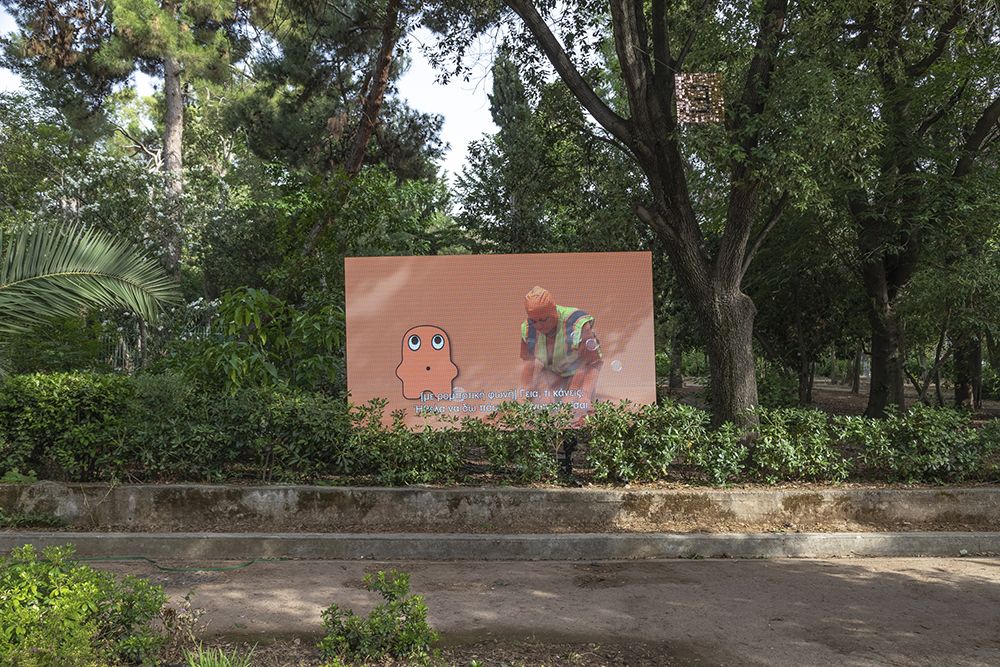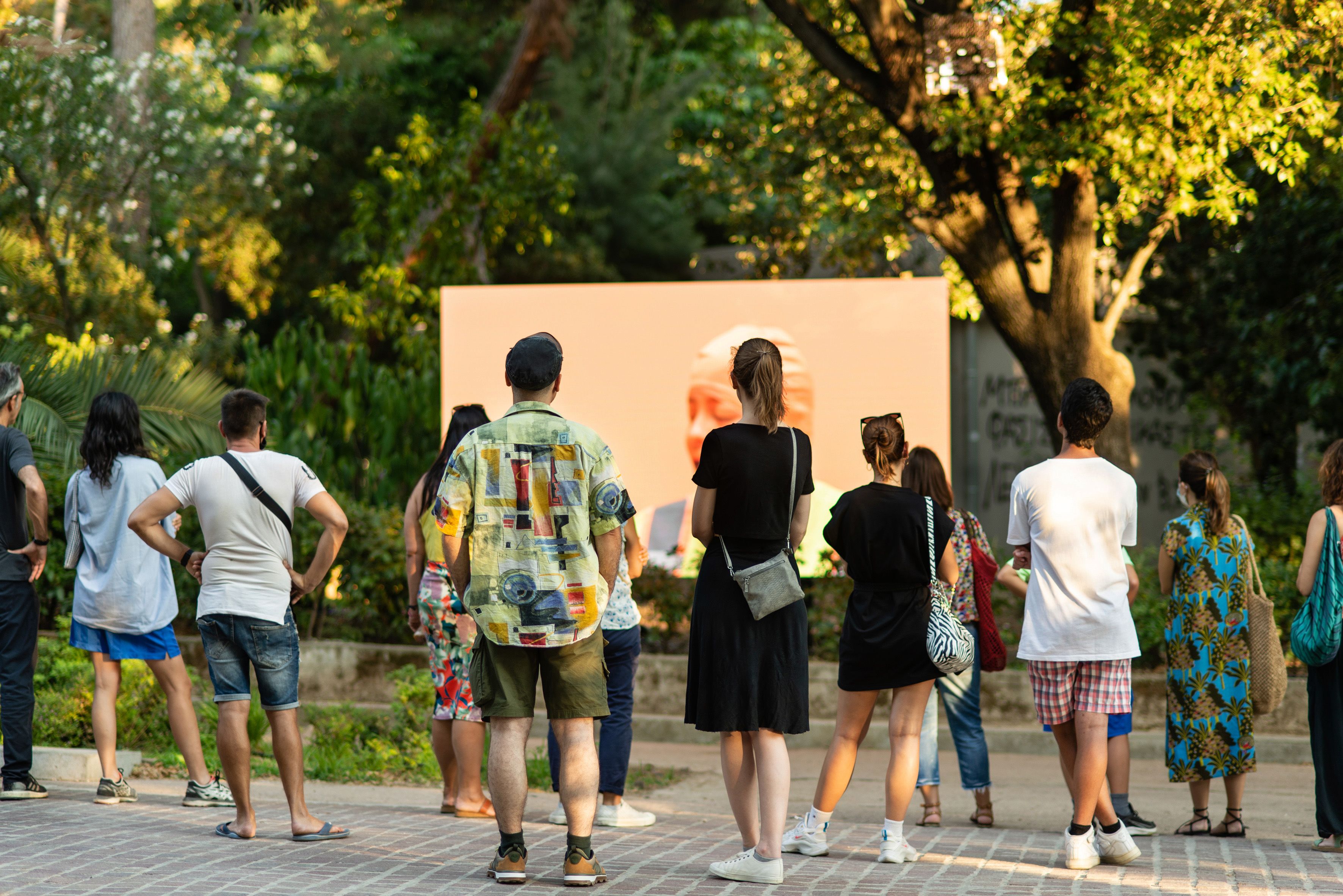How It’s Made: Abra by Hiba Ali

A still from Abra. Image courtesy of the artist
A still from Abra. Image courtesy of the artist
by Rowan Beaird
Alum Hiba Ali (BFA 2012, BA 2013) is impossible to categorize.
They’re a new media artist, DJ, writer, educator, and scholar. Their work has been published widely and exhibited around the globe, in exhibitions and venues in Berlin, Istanbul, São Paulo, and New York, among many others. In each of their roles, Ali is interested in labor, surveillance, and the imbalance of personal and corporate power. A perfect illustration of this is their video piece Abra (2018).
To better understand this multilayered work, Ali spoke with us about their inspiration and process. This is how Abra was made.

A still from Abra. Image courtesy of the artist
A still from Abra. Image courtesy of the artist
What was the inspiration behind this piece?
The inspiration behind the video, where I am speaking with Peccy, Amazon’s blob mascot, came to me when I was pushing carts full of boxes at one of Amazon’s warehouses. I saw promotional customer satisfaction posters with Peccy and reflected on the strange branding tactics that promote customer satisfaction at the very cost of workers’ exploitation and the rendering of our lives as being disposable.
I am very much invested in more equitable futures for poor and working-class people and dismantling cycles of structural poverty. Ideas like universal health care, free university education, reparations, abolishing carceral systems (e.g. police and prisons), and debt cancellation are not out-of-this-world ideas; they can be practiced and put into place. This is about expanding and/or reframing our framework of possibilities, and I think about these ideas through color. For example, the orange color of Peccy that I converse with in Abra connects Peccy (the corporate mascot) with modes of incarceration (the orange jumpsuit) and the ongoing colonialism in North America (Canada’s Indigenous Peoples’ Day is also known as Orange Shirt Day).

Photo by Stelios Tzetzias. Image courtesy of the artist and Onassis Stegi's You and AI: Through the Algorithmic Lens
Photo by Stelios Tzetzias. Image courtesy of the artist and Onassis Stegi's You and AI: Through the Algorithmic Lens
How did you decide on the medium?
I am a video artist, musician, performance artist, and scholar. I think of music, 3D animation, and the green screen as a world-building and world-framing phenomenon. Through critical humor and an absurdist framework, I reconsider where and how we situate what is normal.
Walk us through the process of developing it. How did it evolve during its creation?
Abra was sourced from both my lived experience as a mixed-race (South Asian, East African, and Arab) working-class person who worked at an Amazon warehouse and by studying the ways that Amazon has conducted union-busting tactics and charting how the corporation has destroyed the environment and people’s lives.
“Through critical humor and an absurdist framework, I reconsider where and how we situate what is normal.”
To develop the work, I wrote a film score with dialogue, text, and performance and consulted my lived experience and research on the power of unions. After I started my PhD in Queen’s University’s Cultural Studies program, I reflected on the experience I had while working at the warehouse paired with my lifelong experience of working multiple jobs and watching my parents work multiple jobs so we could get by. After I did several drafts of the film score, I performed in it, filmed it with green screen (assisted by Emily Pelstring), and edited it in Adobe Character Animator, Premiere, and After Effects.

Photo by Panagiotis Baxevanis. Image courtesy of the artist and Onassis Stegi's You and AI: Through the Algorithmic Lens
Photo by Panagiotis Baxevanis. Image courtesy of the artist and Onassis Stegi's You and AI: Through the Algorithmic Lens
What surprised you during the process? What was your biggest challenge?
The most challenging aspect of the work was trying to make sense of how a vast monopoly conditions and influences every part of our lives. The question I asked myself was, how do we make sense of an infrastructure that purposefully makes itself invisible so we can’t detect it? This is how a lot of surveillance infrastructure works (e.g., the camera that you don’t know is watching you but once you see it, you can’t unsee it). In a parallel fashion, a lot of labor—especially done by poor, working-class, femme, Black, and Brown people—is rendered (again, purposefully) invisible. So again, I asked myself: How can we make that visible? That’s why in the video, the color orange becomes so important; it is the color of racialized labor purposefully being made invisible and rendered as disposable. ■
{{[http://www.saic.edu/news/alums]ALUMS}} {{[http://www.saic.edu/news/artconnectsus]ART CONNECTS US}}
